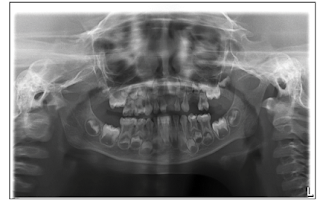Non Syndromic Form of Bilateral Bimaxillary Bull Teeth- A Case Report with Challenges in Pediatric Dentistry
Genetic and Rare Diseases Information Centre (GARD),National
Institutes of Health (NIH) and Orphanet, Europeanrare diseases database considers
enlarged pulp chambers withroot dilacerations in primary teeth as a rare
disease.Witkop defined bull teeth or taurodontism as teeth with largepulpchambers in which the bifurcation or trifurcation aredisplaced apically and
hence the chamber has greater apicooclusalheight than normal teeth and lacks
cervical constrictionat CEJ. Bull teeth was first described in 1908 by
Gorjanovic-Kramberger in a 70,000 year old pre-Neanderthal fossil,discovered
in Kaprina, Croatia. Bull teeth were a frequentfinding in early humans and
is most common today in Eskimos,possibly as a selective adaptation for cutting
hide. The term‘taurodontism’ was however first stated by Sir Arthur Keithin
1913. The origin of this term is from Greek “tauros” whichmeans “Bull” and
“adontos” which means “Tooth”. Theorigin of the word taurodont is from a
combination of Latin and
Greek giving the meaning of Bull tooth. Bull teeth is seen withhighest frequency in eskimos as reported in the literature.It has also been reported in hybrids of Australoids, the Bushpeople of South Africa
Turkish population showedprevalence of 22.8%, whereas Indian population showedprevalence of bull teeth in mandibular primary first molars to be0.4% . Most commonly affected teeth are molars followedby premolars in the permanent dentition, while primary molarsare commonly affected in the primary dentition but bimaxillarybilateral incidence is very rare as in our case. Multiple theorieshave been proposed to suggest a possible etiology. One theorystates that failure of Hertwig’s epithelial root sheath diaphragmto invaginate at the normal level results in short roots andenlarged pup chamber




Comments
Post a Comment